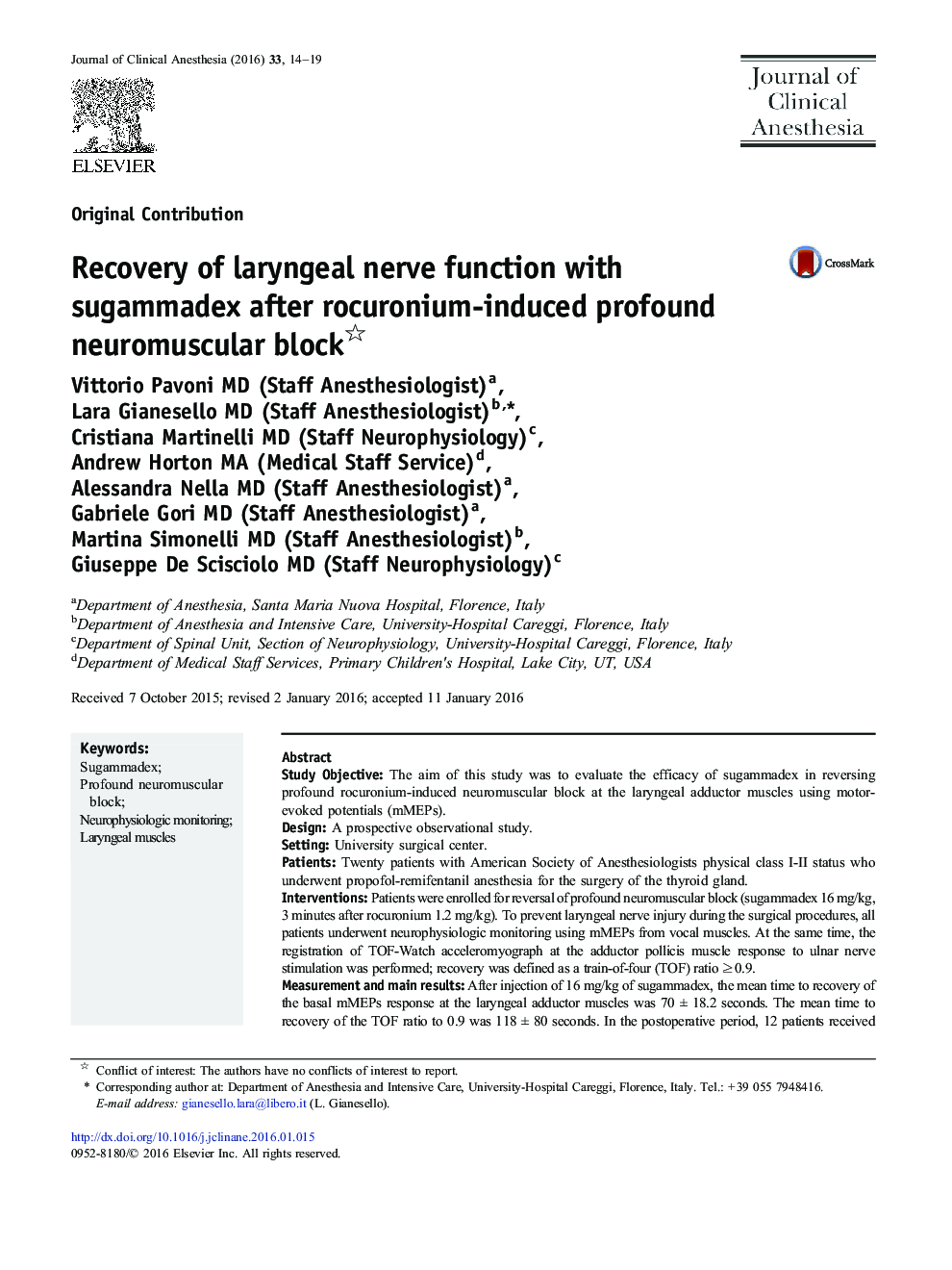| Article ID | Journal | Published Year | Pages | File Type |
|---|---|---|---|---|
| 2762088 | Journal of Clinical Anesthesia | 2016 | 6 Pages |
•The recovery of laryngeal nerve after sugammadex has not previously been assessed.•The efficacy of sugammadex was evaluated using motor-evoked potentials.•The recovery of laryngeal nerve after 16 mg/kg sugammadex was efficacious.•In urgent scenario, “early” extubation can be performed, even with a TOF ratio ≤ 0.9.
Study ObjectiveThe aim of this study was to evaluate the efficacy of sugammadex in reversing profound rocuronium-induced neuromuscular block at the laryngeal adductor muscles using motor-evoked potentials (mMEPs).DesignA prospective observational study.SettingUniversity surgical center.PatientsTwenty patients with American Society of Anesthesiologists physical class I-II status who underwent propofol-remifentanil anesthesia for the surgery of the thyroid gland.InterventionsPatients were enrolled for reversal of profound neuromuscular block (sugammadex 16 mg/kg, 3 minutes after rocuronium 1.2 mg/kg). To prevent laryngeal nerve injury during the surgical procedures, all patients underwent neurophysiologic monitoring using mMEPs from vocal muscles. At the same time, the registration of TOF-Watch acceleromyograph at the adductor pollicis muscle response to ulnar nerve stimulation was performed; recovery was defined as a train-of-four (TOF) ratio ≥ 0.9.Measurement and main resultsAfter injection of 16 mg/kg of sugammadex, the mean time to recovery of the basal mMEPs response at the laryngeal adductor muscles was 70 ± 18.2 seconds. The mean time to recovery of the TOF ratio to 0.9 was 118 ± 80 seconds. In the postoperative period, 12 patients received follow-up evaluation of the vocal cords and no lesions caused by the surface laryngeal electrode during electrophysiological monitoring were noted.ConclusionsRecovery from profound rocuronium-induced block on the larynx is fast and complete with sugammadex. In urgent scenarios, “early” extubation can be performed, even with a TOF ratio ≤ 0.9. However, all procedures to prevent postoperative residual curarization should still be immediately undertaken.
